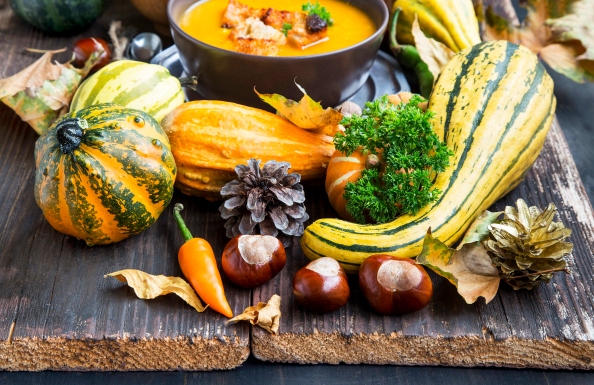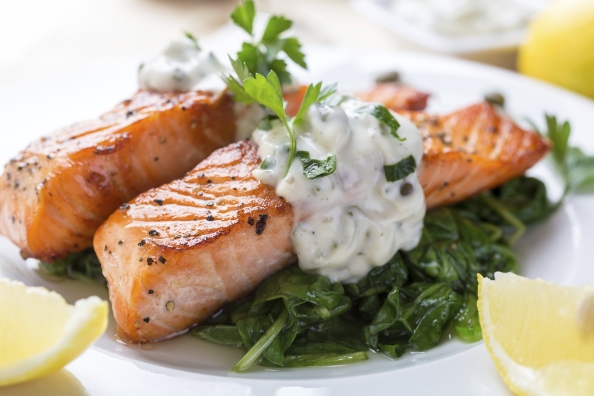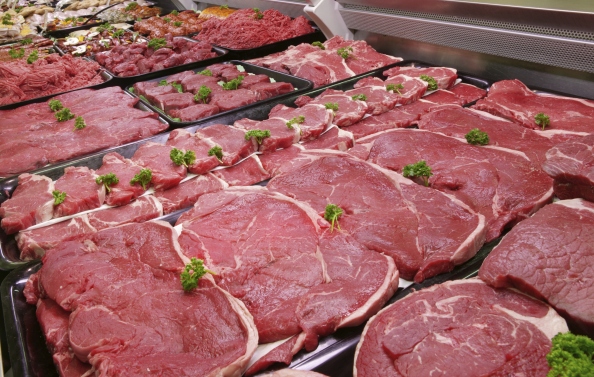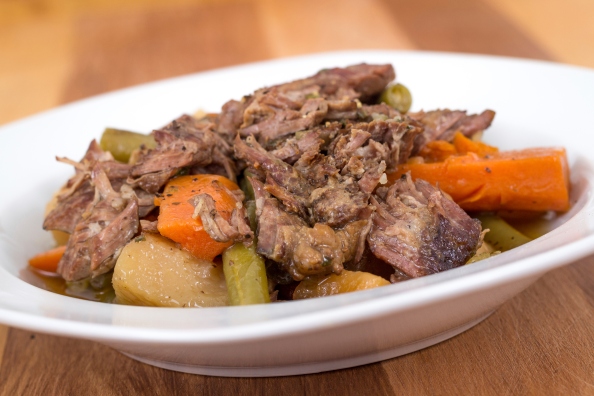
Delicious marinated vegetables are the star in our easy gazpacho salad recipe; comprised of fresh cucumbers, tomatoes and red onions. This is just about the easiest recipe in our collection and can be made quickly. Just like our Cannellini Relish recipe, the trick to this recipe is just to let the vegetables marinated for 8-12 hours to let the vegetables soak up all that delicious vinaigrette. This recipe is so quick and simple that we used to make it in a fix at the restaurant, or substitute this salad for others if we ran out of ingredients.
How to Make Gazpacho Salad
Ingredients:
- 3 Medium Roma Tomatoes
- 1 Medium to Large Red Onion
- 1 Cucumber
- 1/2 Cup of Olive Oil
- 1/3 Cup of Red Wine Vinegar
- 1 Tablespoon of Chopped Garlic
- 2 Teaspoons of Worcestershire Sauce
- Salt and Pepper To Taste
Preparing Your Vegetables

Wedge Tomatoes
Preparing the tomatoes is easy, even if your knife skills are a bit lacking. Create tomato wedges by simply cutting the top of the tomato with the stem off, then splitting the tomato down the middle, lengthwise. Next, lay the tomato halves flat with the cut side down. Cut each half in-half again lengthwise. Now take each quarter and split in half again — leaving 8 perfect tomato wedges.

Sliced Cucumbers
Now, slice your cucumbers by removing both tip ends. Then, simply slice the cucumber into thin, round medallions. Try to get the slices as thin as possible, otherwise the cucumber flavor tends to be a bit too strong in each bite and can actually overpower the tomatoes, onions and vinaigrette. For perfectly thin medallions every time, feel free to use a mandolin slicer.



Sliced Red Onions
When it comes to slicing your red onions, you have two choices. you can slice the onions into rings, or you can slice into strands. For rounds, simply cut the top and bottoms off of the red onion and slice width-wise into thing rounds or rings. For strands, cut the top and bottom off the red onion, then cut in half lengthwise then slice into thin strands — leaving half-rings. The reason for the options is that some people do not like the rings, and feel that that is just too much onion in every bite. Red onions are stronger and have more bite than yellow onions, so cutting in half and then into strands will make the onion flavor a bit milder in every bite. Again, feel free to use your mandolin for the onions as well.

Combine Vegetables
In a large mixing bowl, combine all of your vegetables together and add salt and pepper to taste. We tend to go a little heavy on the pepper, sprinkling all over the top of the vegetables, and just a hefty pinch of salt. You can use any type of salt you like, but we prefer kosher salt as the best. Once seasoned, give the vegetables a toss and stir, ensuring that all the veggies come into contact with the spices.

Prepare Your Vinaigrette
We use a “quick vinaigrette” for this marinade; this is a bit different than a emulsified vinaigrette, but gives a much better quality salad. As opposed to a traditional vinaigrette, you combine all the ingredients at once, instead of slowly drizzling in the oil. The reason we do this is that an emulsified vinaigrette will thicken too much and turn into a fatty thick dressing during the marinating. With the quick vinaigrette, the mixture remains thinner and better coats and marinates the vegetables.
To make the quick vinaigrette, combine Olive Oil, Red Wine Vinegar, Chopped Garlic, and Worcestershire Sauce in a separate small bowl. Once combined, use a wire whisk or a fork to whip the mixture together (for about a minute). Vinaigrette should come together and thicken a bit, but remain a fairly loose mixture. And that’s it!
HINT: Use a quick vinaigrette on other veggies, chicken, shrimp, fish and beef as a marinade as well
Your Gazpacho salad is almost done. Now just drizzle the vinaigrette over all of the vegetables in the large mixing bowl and use a spatula to toss everything together — ensuring that all of the vegetables get a taste of the vinaigrette.
Let Your Salad Marinate
Like we said in the introduction, giving the salad time to marinate, soak up the vinaigrette, and let the flavors meld is the real key to this recipe. We use the 8 hour rule to get the perfect flavor and let the vegetables break down a tiny bit. It can be served immediately — as we often did in the restaurant — but at least 4 hours is needed for the vegetables to really soak up some flavor.

Your Gazpacho salad is ready to enjoy! We don’t usually garnish our salad, but feel free to garnish yours with chopped cilantro or a chopped mint leaves. For extra flavor, we often dress each individual salad serving with blue cheese crumbles and serve alongside fresh baked bread (focaccia goes well with this salad).
Now Enjoy!
Don’t forget to follow us and get all of our delicious recipes as soon as they are published…
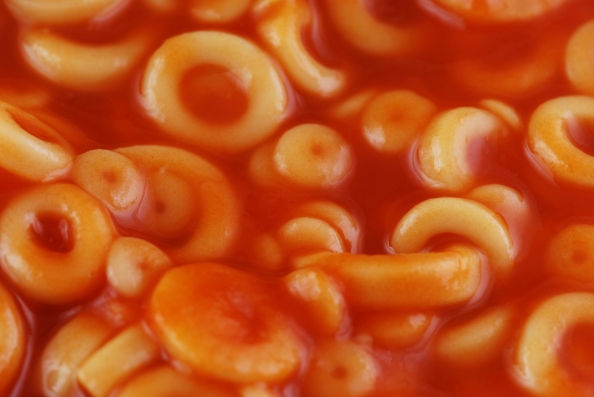 Children and adults alike love the taste of SpaghettiO’s. Put a new spin on this classic with the following recipe, and bring out your inner child. You’ll save money by making it at home instead of spending money on a can, and you’ll have enough to feed your family or save the rest for leftovers. This variety is also healthier, so you’ll feel good about giving it to your children.
Children and adults alike love the taste of SpaghettiO’s. Put a new spin on this classic with the following recipe, and bring out your inner child. You’ll save money by making it at home instead of spending money on a can, and you’ll have enough to feed your family or save the rest for leftovers. This variety is also healthier, so you’ll feel good about giving it to your children.
